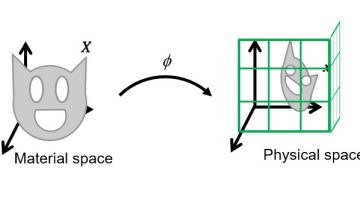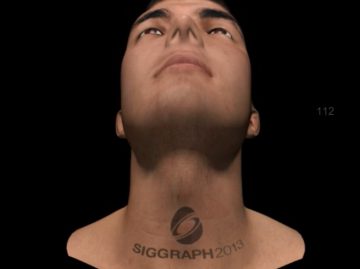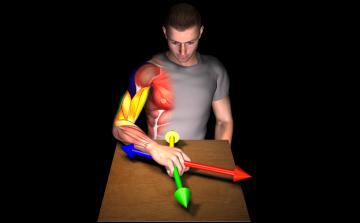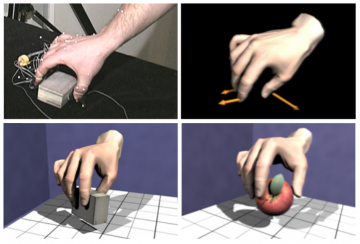Measuring Contact with Real Human Bodies
Simulating how the human body deforms in contact with clothing, wearables, and other objects is of central importance to many fields. However, the tissue material properties needed to accurately simulate real human bodies had been sorely lacking. We showed that these mechanical properties can be directly measured using a novel hand-held device. We have developed […]
Eulerian Solids
Soft tissues are usually simulated using the Finite Element Method (FEM), with the Lagrangian approach that is the standard in engineering. In this approach the simulation tracks the position of material points over time. In contrast, in an Eulerian approach the space in which the […]
Skin Simulation
Simulating thin hyperelastic materials, such as human skin and skin-tight clothing, that move in close contact with the body is very difficult. We solve this problem by combining Eulerian discretization of skin on the body with the use of reduced coordinates. This enables simulation of skin sliding […]
Synergies and Modularity in Human Sensorimotor Control
Human motor skills are remarkably complex because they require coordinating many muscles acting on many joints. A widely held, but controversial, hypothesis in neuroscience is that the nervous system simplifies learning and control using a modular architecture, based on modules called synergies. Previous evidence for modularity had been indirect, based on statistical regularities in the […]
Interaction Capture and Synthesis
Controlling contact between the hand and physical objects is a major challenge for computer animation, virtual reality, and sensorimotor neuroscience. The compliance with which the hand makes contact also reveals important aspects of the movement’s purpose. We present a […]



